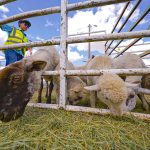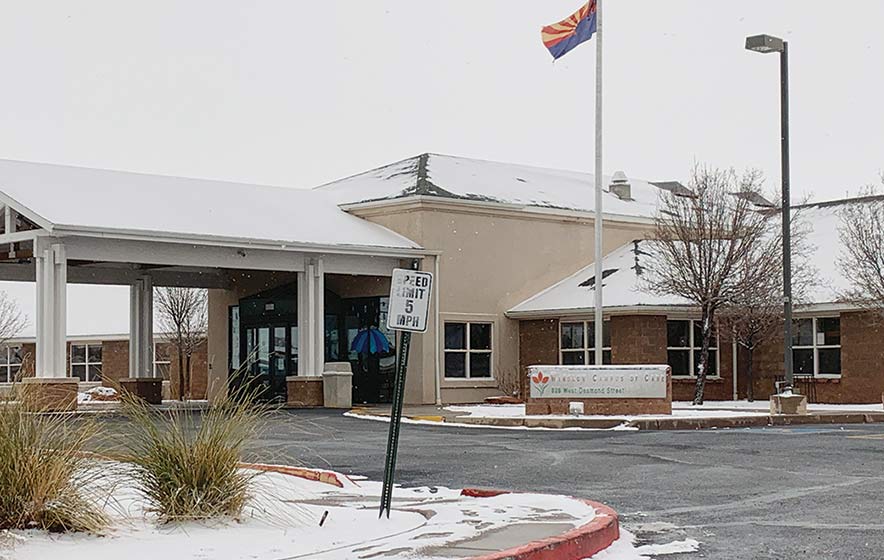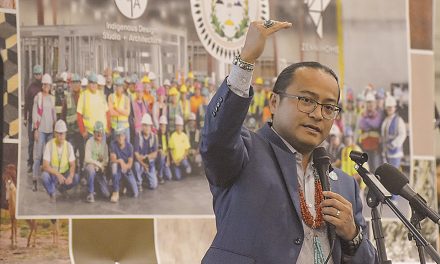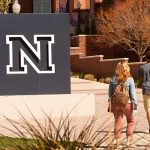
Jurisdiction, lack of ombudsman hinder nursing home oversight
WINDOW ROCK
After 40 COVID-19 deaths were reported at the Winslow Campus of Care two weeks ago, the Navajo Health, Education and Human Services Committee members attempted to gain clarity regarding oversight over nursing homes.
But clear answers were hard to come by, at least initially. In the Feb. 3 meeting, the committee learned that with multiple state, county and tribal entities having varying responsibilities in multiple jurisdictions, effective oversight over long-term care facilities is dependent on communication and coordination between them, which is challenging in normal times and even more so during the pandemic.
“I haven’t really researched it on my end,” Navajo Department of Health Director Jill Jim first told the committee. “I think we can work with the local health departments and the state,” said Jim. “If they are state-licensed, I think that these agencies can be checked on to make sure services are being provided.
“I would have to talk with (Division of Social Services director) Ms. Neswood-Gishey and HEHSC on strengthening some sort of coordination in dealing with our elders,” she said. Jim said DSS contracts should have provisions to allow the Nation to make sure elders are safe and receive the best care possible.
Then she dropped off the HEHSC teleconference call, delegating to Ramona Antone-Nez, director of the NDOH Epidemiology Center, to speak on her behalf.
“It was brought to our attention yesterday that there were a number of incidents of COVID-19 cases and deaths at the Winslow Campus of Care,” said Antone-Nez. “I do have questions about how is it that we didn’t understand or know about this earlier, which would enable us to respond to this situation.”
Antone-Nez said the Navajo COVID-19 Health Command Operations Center works with multiple sectors of the health care system and includes tribal health coordination and outreach representatives within the state of Arizona and counties.
“What we may have overlooked is when this is a cluster that has occurred in a border town region, we may not have seen how those were all coming from one location,” she said. “What we will need to do from our end is better understand the data of what has occurred at the Winslow campus of Care. Please allow us time to investigate this.”
Antone-Nez affirmed that prior to learning about the WCC outbreak, the HCOC had not received notification that there was a need for assistance there. She said it was “a big revelation” to learn about the major adverse event.
However, said Antone-Nez, it is not unusual for it to take time to identify a specific cluster of cases in an area where there is a spike in cases. “We’re learning that these multiple cases are from one facility,” she said. According to Jim, there is also a lag time in receiving death data “due to verification with the state.”
‘Our duty’
“This incident in Winslow has taken us by complete surprise, I can tell,” Delegate Thomas Walker, who represents communities bordering Winslow, told HEHSC members. “No one stands ready to say, in the event fatalities happened at this scale, ‘Here’s what the protocols are, here’s the authorities over the matter, and here’s something that families should know.’ “The immediate concern today, at this time, is are our precious relatives safe in these institutions?” he asked.

Courtesy photo | Thomas Walker
A COVID-19 outbreak at Winslow Campus of Care nursing home claimed the lives of 40 residents, including some Navajos.
Wayne Claw, director of the Navajoland Nursing Home, where there have been no COVID-19 deaths to date, also expressed concern about the care of “masanis and cheiis” and what happened at WCC, where some of his residents are referred by IHS if they need rehabilitation. “We had some elders who were sent there,” said Claw. “We know them very well. We were hoping they would come back and they didn’t. We had some pass away over there.”
Claw emphasized that the Navajo Nation Council and the president have every right to know how their elders are being treated and what the conditions are in long-term care facilities. “I am very concerned to the extent where there’s no measure,” said Walker. “I don’t know where this is going to go, but we have our work, our duty, and our responsibility to take care of our people. We’re talking about loss of human life, about 40-plus lost in one setting, one program.”
HEHSC Vice Chair Carl Slater committed to looking into the state of Arizona’s oversight responsibilities. He did not respond to a request for a progress update from Navajo Times.
Ombudsman ‘abolished’
HEHSC Chairman Daniel Tso asked Antone-Nez what happened to the former NDOH Navajo Area Agency on Aging “ombudsman” who used to conduct oversight over long-term care facilities.
In general terms, an ombudsman is an official who can investigate complaints over administration or violations of human rights and help find resolution. “That particular person had the authority and capability to go into assisted care or long-term care facilities to check up on the Navajo citizens at any particular facility adjacent to the Navajo Nation,” said Tso. Antone-Nez replied that she believed the ombudsman position was currently vacant. She said that in 2018, when NDOH updated its master plan of operation, the NAAA became the Division of Aging and Long Term Care Support.
Claw informed HEHSC that the ombudsman position has been vacant for the last two years. “We did have a lady in that position that was very helpful, but since she left there’s been no replacement,” said Claw. The day after the HEHSC meeting, the Division of Aging and Long Term Care Support confirmed that the ombudsman position was actually eliminated in 2015, even though the outdated DALTCS website still lists ombudsman services.
Responding to an email inquiry from Legislative Counsel Ron Haven and Antone-Nez on Feb. 4, newly hired DALTCS health services administrator Valerie Jones provided further clarification. “In reviewing past DALTCS documents, the ombudsman position was advertised in 2015 but never filled because no one applied and the position was abolished,” said Jones. “At this moment in time, DALTCS does not monitor long-term care facilities.”
In her email, Jones said she will work with the Department of Personnel Management to reestablish the position and get a new ombudsman trained. “The Navajo Nation DALTCS ombudsman will be responsible for facilities on the Navajo Nation as well as for tribal members in facilities across the state,” said Jones.
On Tuesday, Jim said NDOH is “in the process of advertising this position.” Jim, Human Resources Director Perphelia Fowler, and DALTCS administrator Leonora Henderson were asked to report more details on the NDOH Ombudsman position to HEHSC on Feb. 10.
Follow-up
The president’s office confirmed that the Navajo Department of Health and the Health Command Operations Center only provide assistance “if there is a request made.”
“NDOH/HCOC receive many requests daily from many individuals and others and do their best to respond to each,” stated the OPVP. “With this nursing home, there was no request to NDOH/HCOC.” In the Feb. 9 response to the Navajo Times, Antone-Nez said that, since the HEHSC meeting, HCOC partners have been gathering information and discussing the (WCC) situation internally to begin to understand it.
“This includes the Navajo Department of Health, Navajo Area Indian Health Service, and Winslow Indian Health Care Center,” said Antone-Nez. There will also be follow-up with Navajo County, Navajo Division of Social Services and the Winslow Campus of Care, she said.
The president’s office added there was “no communication breakdown” within the HCOC that the Unified Command Group, comprised of the Navajo Nation, Navajo Area IHS, Public Law 93-638 representatives, BIE and BIA, had received information regarding the WCC outbreak in their bi-weekly meetings. “We are bound by HIPAA restrictions and it’s important to note that this facility is located outside of the Navajo Nation,” stated the OPVP.
Neswood-Gishey clarified that DSS does not have jurisdiction or oversight over nursing home facilities in border towns. “The county health departments in which nursing home facilities are located have jurisdiction,” she said. “The Navajo-Arizona Long Term Care System within the Division of Social Services have an intergovernmental agreement with the state of Arizona for case management services only, for certain facilities that have Navajo residents.”
She said IGA allows for quarterly reviews for assisted living and in-home care, and six-month review for nursing home facilities. However, due to the public health emergency, the state has allowed for those reviews to be conducted telephonically.
Neswood-Gishey said that although DSS does not have oversight over the WCC, the Navajo ALTCS program manager did reach out to the facility to inquire about the residents.
“The inquiry revealed that the WCC was COVID-19 free from the onset of the pandemic through December 2020, an isolation unit was utilized but the virus continued to spread beyond,” she said. “New admissions were ceased until recently (and) the WCC leadership is closely coordinating with the Arizona Department of Health Services and Navajo County Health Department.”
Additionally, Neswood-Gishey said the majority of the WCC residents and employees have now been vaccinated through the Winslow Indian Health Care Center Inc. and Walgreens.
As a public service, the Navajo Times is making all coverage of the coronavirus pandemic fully available on its website. Please support the Times by subscribing.
How to protect yourself and others.
Why masks work. Which masks are best.
Resources for coronavirus assistance








 Highway 264,
Highway 264, I-40, WB @ Winslow
I-40, WB @ Winslow